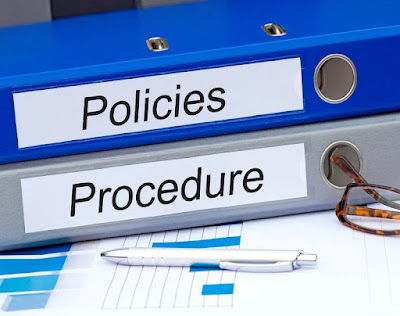What should you know about security policy documents?
In today's interconnected
world, businesses rely heavily on technology and digital systems to operate
efficiently and securely. However, with increased reliance on technology comes
a greater need for robust security and IT policy documents. These
documents serve as the foundation for protecting sensitive data, maintaining
compliance, and ensuring the smooth functioning of an organization's IT
infrastructure. In this blog post, we'll delve into the importance of security
and IT policy documents and provide insights into crafting comprehensive ones
for your business.
 |
| IT policy documents |
The Significance of
Security and IT Policy Documents
Data Protection: Security policy documents are essential for safeguarding sensitive information,
including customer data, employee records, and financial data. By outlining
security measures and best practices, these policies help prevent data breaches
and unauthorized access.
Compliance Requirements:
Many industries have strict regulatory requirements (e.g., GDPR, HIPAA, PCI
DSS) that businesses must adhere to. Security and IT policy documents ensure
compliance with these regulations, reducing the risk of legal penalties and
reputational damage.
Risk Mitigation: Robust
policies and procedures are critical for identifying, assessing, and mitigating
potential risks. They provide guidelines for employees to follow in case of
security incidents, reducing the impact of such events.
 |
| Security policy documents |
Operational Efficiency:
IT policy documents establish standard practices for the organization's IT
systems and resources. This promotes efficiency by ensuring that everyone
follows consistent procedures and protocols.
Resource Allocation:
Clear policies help allocate resources effectively by prioritizing security
measures based on identified risks and vulnerabilities. This ensures that
resources are not wasted on unnecessary security measures.



Comments
Post a Comment